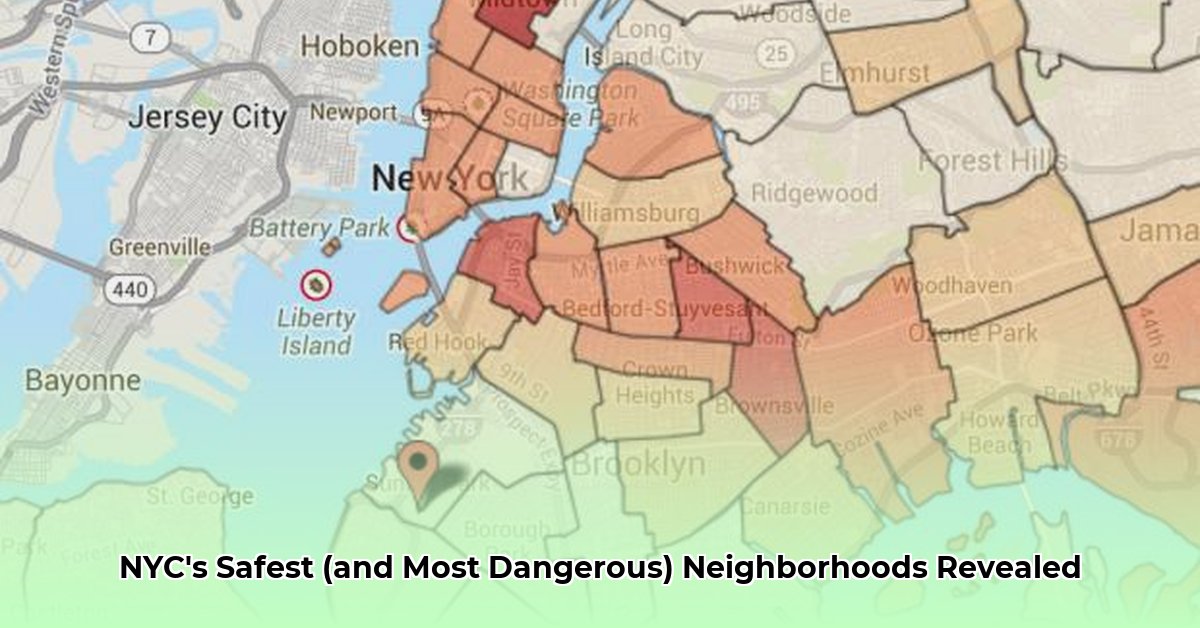
NYC Neighborhood Safety: A Complex Picture
New York City's diverse neighborhoods present a complex picture of safety. While overall crime rates may offer a general impression, understanding the nuances requires a deeper dive into neighborhood-level data. This analysis explores available statistics, highlights their limitations, and offers insights for residents, businesses, and policymakers. Understanding the intricacies of NYC crime data is vital for informed decision-making and effective crime prevention strategies. For more localized data, check out this NYC crime analysis.
Crime Trends: A City-Wide Perspective
While overall crime rates in NYC have shown some improvement in specific metrics compared to the post-pandemic period, these figures mask significant variations across boroughs and neighborhoods. For example, some analyses indicate a year-over-year decrease in homicides of approximately 25.7%, but this improvement needs to be contextualized against potentially atypical post-pandemic baselines. The current average homicide rate, even with the decrease, may still exceed pre-pandemic levels in certain areas. A holistic understanding requires looking beyond simple averages. Simply stating a city-wide average obscures the stark differences in crime rates across specific neighborhoods and communities.
Homicide Rates: Progress and Persistent Challenges
The decrease in homicides is encouraging, but it's crucial to acknowledge the uneven distribution of crime across the city. Some neighborhoods continue to experience significantly higher rates than others, indicating a need for targeted interventions specific to individual communities. Understanding the underlying social and economic factors contributing to these disparities is crucial for developing effective long-term strategies aimed at crime reduction. Furthermore, comparisons should always be contextualized within the larger picture of specific time periods and factors that may skew the results.
Granular Data: The Need for Neighborhood-Level Insights
City-wide statistics provide a broad overview, but lack the granular detail necessary for effective resource allocation and targeted interventions. Without neighborhood-level data, it's like trying to fix a plumbing leak without knowing the exact location. This lack of precise information prevents the efficient deployment of resources and hinders the development of truly effective crime prevention strategies. The availability of more granular data is crucial for understanding the specific needs of different communities.
Data Limitations and Biases
The data used in this analysis comes from various sources, each with its own methodology and limitations. Differences in data collection methods, time periods, and crime definitions can lead to inconsistencies and hinder direct comparisons. Furthermore, official statistics may not fully capture the public perception of safety; fear of crime can significantly impact a community's well-being, even in areas with relatively low crime rates. It's important to acknowledge and address these limitations for a more accurate understanding. Furthermore, the inherent biases within different data collection methodologies must be considered when drawing conclusions. Understanding these limitations is crucial for responsible interpretation of the data.
Stakeholders and Their Needs
Accurate, neighborhood-level safety statistics are vital for a variety of stakeholders:
- NYPD: For strategic resource allocation, identifying crime hotspots, and informing predictive policing.
- City Government: To guide funding decisions for community programs, infrastructure improvements, and social services.
- Community Groups: To develop targeted safety initiatives, advocate for improvements, and address specific neighborhood concerns.
- Residents and Businesses: To make informed decisions about where to live, work, and operate. The availability of accessible, trustworthy data empowers community members to proactively engage in safety planning and advocacy efforts.
Improving NYC Neighborhood Safety Data
Improving the quality and accessibility of neighborhood-level safety data requires a collaborative effort:
- Standardized Data Collection: Implementing consistent methods across all agencies.
- Frequent Data Updates: Ensuring timely and relevant information for informed decision-making.
- Multidisciplinary Research: Investigating the complex social and economic factors influencing crime rates.
- Transparent Data Sharing: Making data readily accessible to all relevant stakeholders.
By addressing these challenges, NYC can create a more informed and safer environment for all its residents. A commitment to data transparency and rigorous analysis is vital for effective crime prevention and community safety.
Finding the Safest Neighborhood: A Multifaceted Approach
Determining the "safest" neighborhood in NYC requires a nuanced approach, going beyond simple crime statistics.
- Personal Priorities: Individuals should consider their own definition of "safe," prioritizing factors like access to green spaces, good schools, or proximity to work.
- Multiple Data Sources: Consulting various sources provides a more comprehensive understanding of safety beyond simple numerical representations.
- Crime Type Analysis: Evaluating specific crime types, not just overall rates, provides a more detailed picture of a neighborhood's safety profile.
- Contextual Understanding: Considering population density, socio-economic factors, and historical trends helps interpret the data accurately.
- Community Engagement: Local resources, such as neighborhood associations and community forums, provide valuable insights and perspectives beyond official statistics.
By considering these factors, individuals can make more informed and personalized decisions about their choice of neighborhood. Understanding data limitations and personal priorities are equally important in this assessment of neighborhood safety. Data-driven decision-making empowers people to choose communities that meet their individual needs and enhance their overall well-being.